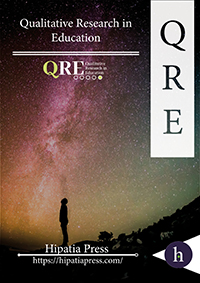A Construal of the Understanding Level of Quality Assurance by Internal Stakeholders in Two Malaysian Universities
Keywords:
Downloads
Abstract
The “understanding” in terms of interpretation of quality assurance is essential for the acceptance, theorizing and the practical application of the methods proposed by it. A great deal of research papers have often pointed to the lack of understanding, among others, as the reason behind the inadequate nature of implementing quality assurance in higher education institutes. This paper examines the “understanding” levels of two key stakeholders in terms of the meaning they make out of the policy pronouncements on quality. It utilizes the qualitative case study scheme to provoke the thoughts of mainly the academic staff and their administrative counterparts in two public universities. The findings reveal that there exist differences which are mainly grounded on their role and experience in the scope of understanding the purposes served by quality, and the depths of quality management fulfillment among the two categories of stakeholders. This underpins the value of clarifying the philosophy of quality assurance to stakeholders and their involvement for better understanding and ownership.
Downloads
References
Becket, N., & Brookes, M. (2008). Quality Management Practice in Higher Education–What Quality Are We Actually Enhancing?. Journal of Hospitality, Leisure, Sport & Tourism Education, 7(1), 40-54.
Google Scholar CrossrefEhrenberg, R.H. and Stupak, R.J. (1994), “Total quality management: its relationship to administrative theory and organizational behavior in the public sector”, Public Administration Quarterly, Vol. 18 No. 1, pp. 75-92.
Google Scholar CrossrefHarvey, L. (1998). An assessment of past and current approaches to quality in higher education. Australian Journal of Education.42(3): 237-255.
Google Scholar CrossrefHarvey, L. (1995). Beyond tqm. Quality in Higher Education, 1(2), 123-146.
Google Scholar CrossrefHarvey, L. (2006). Impact of Quality Assurance: Overview of a discussion between representatives of external quality assurance agencies. Quality in Higher Education.12(3): 287-290.
Google Scholar CrossrefHarvey, L.and and Green, D. (1993). Defining quality.Assessment and Evaluation in Higher Education,18(1): 9-34.
Google Scholar CrossrefHarvey, L. and Williams, J. (2010). Fifteen years of quality in higher education.
Google Scholar CrossrefHord, S. and Hall, G. (2001).Implementing change: Patterns, principles, and potholes.Boston: AllynandBaeon. 191-1998.
Google Scholar CrossrefHorsley, D. L. and Loucks-Horsley, S. . (1998). CBAM brings order to the tornado of change. Journal of Staff Development.19(4): 17-20.
Google Scholar CrossrefIdrus, N. (2003). Transforming quality for development.Quality in Higher Education.9(2): 141-150.
Google Scholar CrossrefKis, V. (2005). Quality assurance in tertiary education: Current practices in OECD countries and a literature review on potential effects. Tertiary Review: A contribution to the OECD thematic review of tertiary education.
Google Scholar CrossrefLagrosen, S., Seyyed-Hashemi, R., & Leitner, M. (2004). Examination of the dimensions of quality in higher education. Quality Assurance in Education,12(2), 61-69.
Google Scholar CrossrefLagrosen, S. (1999), “TQM goes to school: an effective way of improving school quality”, The TQM-Magazine, Vol. 11 No. 5, pp. 328-32.
Google Scholar CrossrefLagrosen, S. (2000), “Born with quality, TQM in a maternity clinic”, The International Journal of Public Sector Management, Vol. 13 No. 5, pp. 467-75.
Google Scholar CrossrefMelrose, M. (1998).Exploring paradigms of curriculum evaluation and concepts of quality.Quality in Higher Education.4(1): 37-43.
Google Scholar CrossrefMiddlehurst, R. and Woodhouse, D. (1995).Coherent systems for external quality assurance.Quality in Higher Education.1(3): 257-268.
Google Scholar CrossrefNewton, J. (2002). Views from below: academics coping with quality. Quality in higher education, 8(1), 39-61.
Google Scholar CrossrefPark Dahlgaard, S.M. (2001), The Human Dimension in TQM, Learning, Training and Motivation, Department of Management and Economics, Linkoping University, Linkoping.
Google Scholar CrossrefStensaker, B. R. (2003). Trance, transparency and transformation: the impact of external quality monitoring on higher education. Quality in higher education,9(2), 151-159.
Google Scholar CrossrefSmeby, J.-C.and Stensaker, B. (1999). National quality assessment systems in the Nordic countries: developing a balance between external and internal needs? Higher Education Policy.12(1): 3-14.
Google Scholar CrossrefSrikanthan, G. and Dalrymple, J. (2003), “Developing alternative perspectives for quality in higher education”, The International Journal of Educational Management, Vol. 17 No. 3, pp. 126-36.
Google Scholar CrossrefThune, C. (1996). The alliance of accountability and improvement: The Danish experience. Quality in Higher Education.2(1): 21-32.
Google Scholar CrossrefVinzant, J.C. and Vinzant, D.H. (1996), “Strategic management and total quality management: challenges and choices”, Public Administration Quarterly, Vol. 20 No. 2, pp. 201-19.
Google Scholar CrossrefWebb, A., 1994, `Two tales from a reluctant manager’, in WEIL, S. (Ed.) Introducing Change from the Top in Universities and Colleges: 10 personal accounts (London, Kogan Page).
Google Scholar CrossrefYin, R. K. (2003). Case study research: Design and methods (3rd ed.). Thousand Oaks, CA: Sage
Google Scholar CrossrefDownloads
Published
Almetric
Dimensions
How to Cite
Issue
Section
License
All articles are published under Creative Commons copyright (CC BY). Authors hold the copyright and retain publishing rights without restrictions, but authors allow anyone to download, reuse, reprint, modify, distribute, and/or copy articles as the original source is cited.















